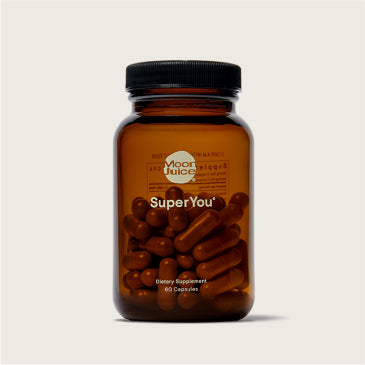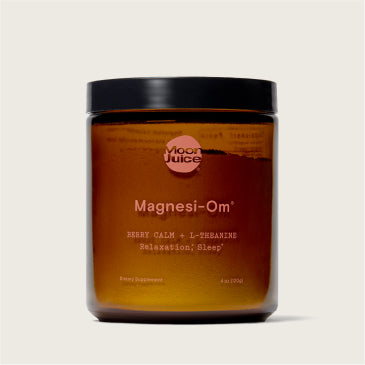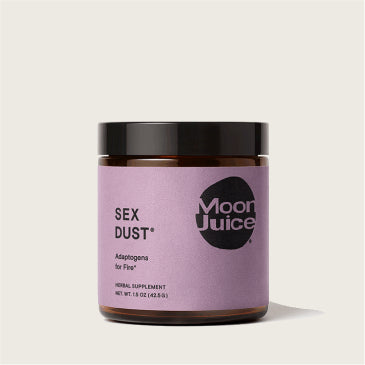A lot of factors contribute to the overall health of your hair. Some things - like thickness, texture, and ability to absorb moisture - are genetic. But the decisions you make each day can also impact the health of your hair, including the products you use to wash it, the tools you use to style it, and the foods you eat. While these factors can’t change your hair’s natural state, they can influence how strong, shiny, hydrated, and soft your hair is.
If your hair feels dehydrated, breaks easily, or sheds more than it should, there are some simple changes you can incorporate into your daily routine that may make all the difference. By taking stock of your diet, hair hygiene habits, and other factors, you can quickly determine your personal problem areas and begin taking steps toward healthier hair.
#1 Know What Healthy Hair Looks like
To start, let’s talk about what healthy hair looks and feels like. To a large extent, you can determine the health of your hair based on its appearance, texture, and how it feels to the touch. When hair is healthy, it looks and feels:
- Shiny
- Smooth
- Soft
The ends of your hair are another important signifier of its health. The ends of healthy hair should be smooth and even. Damage at the ends of your hair, like split ends and frayed or broken tips, can be a sign that the health of your hair cortex, the thickest layer of your hair, has been compromised. This damage can result from heat styling, chemical treatments, and coloring, but it can also be a sign that your hair needs more hydration or more regular haircuts.
#2 Learn Your Hair Type
Learning your hair type is an important step in mastering your hair health because different hair types can require different methods of care. Depending on your specific hair type, different shampoos, conditioners, styling products, and hair hygiene habits may be better than others.
For example, people with curly hair may need to nourish their hair with more hydrating ingredients and wash their hair less often, as the oils in their hair can have a more difficult time traveling down curly strands. Similarly, people with straight hair may need to condition less and wash more to maintain hair health. If your strands are straight, the oils in your hair can spread from your scalp to your ends faster—and without the texture of waves or curls, these oils may also be more visible.
There are four commonly accepted hair types, numbered sequentially from the straightest hair (1) to the curliest (4). Each includes three subtypes, based on curl gradations, absorbency (a.k.a. porosity), and texture.
Type 1: Straight hair
Type 1 hair has no discernible curl pattern and an overall texture that can range from coarse to fine, with individual strands ranging from thick to thin. The subtypes include:
- Type 1A, which is usually soft, shiny, and oily
- Type 1B, which has slightly more volume
- Type 1C, which tends to be more coarse
For all of these subtypes, oil is the biggest threat to hair health. If you have type 1 hair, you should avoid excessive shampooing, as this can make this already oil-prone hair type even more oily. Limit washing to a few times a week. If you need more frequent washing, consider using a dry shampoo.
Type 2: Wavy hair
This hair type has loose waves that generally begin just at the midpoint of long strands. The type 2 subtypes are:
- Type 2A, which is usually straight at the roots before waving into a loose “S” shape
- Type 2B, which has a more noticeable “S” shape
- Type 2C, which features slightly larger waves
Type 2 hair can be more susceptible to frizz than Type 1, particularly when dry. If you have type 2 hair, you may benefit from slightly more hydrating products than those with type 1 hair.
Type 3: Curly hair
You may have type 3 hair if you have loose to tight curls that extend all the way from your hair’s roots to its ends. The subtypes are:
- Type 3A, with very loose curls that may still retain a wavy “S” shape
- Type 3B, which features larger curls
- Type 3C, with tighter curls full of spring and volume
The primary concern for type 3 hair is a lack of hydration, so keeping it well-moisturized and nourished is key.
Type 4: Coily hair
The final hair type includes hair with very tight curls and coils. The subtypes for type 4 hair include:
- Type 4A, with tight coils that fall in a defined “O” shape
- Type 4B, which features tight coils arranged in a “Z” pattern from the scalp
- Type 4C, which features the tightest curls
In addition to being susceptible to dryness, type 4 hair is also very fragile. Heat styling, color treatments, and many other common hair practices can be very harmful to this hair type.
#3 Use the Right Shampoo
Regular shampooing is necessary if you want to keep your hair healthy. But choosing the right shampoo is equally important. As mentioned above, certain hair types might benefit from shampoos that contain more or less hydrating ingredients. But before you shop for shampoo, you also want to consider your scalp type.
There are two types of scalps to consider:
- Oily – If your scalp tends to produce a lot of sebum - or oil, you’ll want to avoid shampoos that promise to add moisture or hydration. Instead, look for shampoos that strengthen your hair and add volume.
- Dry – If your scalp tends to feel dry, you may benefit from a boost of hydrating ingredients in your shampoo. Volumizers and fortifiers can increase dryness, leading to itching and flaking. Instead, opt for shampoos that prioritize moisturization and hydration.
In most cases, your hair type is linked to your scalp type. Those with straighter hair types tend to have an oily scalp, while curlier types tend to need more moisture.
#4 Condition Often
Once you’ve found your shampoo, it’s time to figure out which conditioner is best for you. Conditioner has several important benefits for your hair’s health, including:
- Helping to seal the cuticle of your hair after shampooing
- Providing increased smoothness and shine
- Reducing frizz and friction by neutralizing your hair’s electric charge
Conditioners contain an ingredient known as cationic surfactants, which give the molecules in the conditioner a positive charge. Because the molecules in hair are negatively charged, they’re attracted to conditioner molecules, which allows the conditioner to bind to your hair. As a result:
- Cuticle shafts are flattened, allowing for smoother texture
- Fiber friction is reduced, reducing frizz and tangles
- Life reflection is improved, promoting shine and color
Sign Up, Nerd Out
Get wellness tips, education, and recipes
delivered straight to your inbox.
Get wellness tips, education,
and recipes delivered
straight to your inbox.
#5 Get Regular Cuts and Trims
Hair that is dry or damaged from heat tools and chemical styling may be more likely to develop split ends and breakage. While the shampoo, conditioner, and other products you use can help protect, nourish, and restore healthy hair, another important step is to cut your hair regularly.
Regular cuts and trims are essential to healthy hair because they may help:
- Promote growth
- Remove damaged hair
- Maintains end
Having your split ends trimmed routinely can also help prevent splits from spreading further up your hair shaft, allowing your strands to remain stronger and healthier as they grow.
#6 Be Smart About Styling
Even if your hair is currently healthy, it can be susceptible to damage from outside factors. This is especially true if you have naturally dry hair. wo of the most popular methods for styling hair that can be especially harmful to the health of your hair are:
- Heat styling – Hot tools like hair dryers, curling irons, and flat irons can cause split ends, roughness, and textural damage to your hair. It’s best to avoid them entirely and stick to heatless styling methods if you can.
- Color treatments – Dying your hair breaks down your strands’ cuticles and impairs their protein structure, leading to weaker, thinner hair. Chemicals in hair dye can also damage your hair follicles.
If you are going to use heat styling, always use low temperatures on clean hair that’s also been treated with a heat protectant. In addition, seek the advice of a professional hair stylist before attempting to treat or color your hair, and wait as long in between treatments as you can to help your hair recover.
#7 Feed Your Hair
Like every part of your body, your hair relies on certain nutrients for growth, maintenance, and vitality. Consuming the right amounts of these nutrients can help provide both your body and hair with the support they need to grow strong and healthy.
You can consume many of the nutrients your hair needs through foods, but a lot of people will choose to supplement as nutrient density in today’s foods is not what it used to be. The top nutrients for hair health include:
- Vitamin A – Turn to greens like kale and spinach and vegetables like sweet potatoes, carrots, and pumpkins to boost your Vitamin A intake. Your scalp needs it to produce sebum, an essential oil for keeping your hair moisturized.
- Vitamin B – B vitamins, like those found in whole grains, leafy greens, and seafood, are instrumental in the regeneration of red blood cells, which in turn promote follicular health.
- Vitamin C – There are two main benefits of Vitamin C for your hair.First, it helps produce collagen proteins. Your body uses these proteins in part to make keratin, which forms your hair. Second, Vitamin C helps the skin of your scalp fight harmful free radicals that can damage your hair.
- Omega 3 fatty acids – Because Omega 3 fatty acids, like those found in flaxseed, shellfish, and fish oil supplements, promote cell health, there’s reason to believe they could lead to healthier hair.
- Collagen - Collagen, especially plant-based collagen powder, has been shown to improve skin elasticity.
Take Steps Toward Healthier Hair
If you’re not loving your hair’s shine, color, and texture, there’s a lot of simple changes you can make. Since a healthy head of hair begins with a healthy body, taking steps to properly care for both is essential.
Once you’ve identified your hair type and the shampoo and conditioning routine it needs, you can create a schedule and find products that will nourish and protect your hair appropriately. Avoiding excess heat styling and chemical treatments can help you sustain and improve your hair’s health. If your hair is naturally dry, prone to breakage, or has been damaged due to previous styling, you may also benefit from incorporating a supplement designed to support hair health.
Look for supplements that contain Vitamins A, B, C, and Omega 3 fatty acids to boost the levels of the nutrients your hair needs. While you can take these vitamins individually, it may be more convenient to find a multivitamin that delivers them all in one dose.*
Our SuperHair supplement is a multivitamin plus hair magic for healthier, thicker, stronger hair. It’s packed with 10 bioavailable hair-strengthening vitamins and hair-healthy adaptogens to prevent thinning and hair loss, in addition to natural botanicals that smooth your tresses and nourish your follicles. Our clinical strength formula helps you:
- Replenish nutritional deficiencies that inhibit hair growth
- Minimize stress-induced imbalances that can lead to hair loss, premature graying, and texture changes
- Protect and support healthy hair follicles
- Strengthen and thicken hair with micronutrients
- An easy, healthy way to improve your hair in just a handful of weeks
Your hair is a signal of your body’s internal health. Improving your hair health should impact more than just your hair. These tips can help you get healthier hair while supporting the health of your body and mind.
*Before you start any new supplement, be sure to talk with your doctor to ensure it won’t affect any health conditions you have or interfere with any other medications you’re taking.
Sources:
MedlinePlus. Is hair texture determined by genetics?
PubMed. Healthy Hair: What is It?
Seriously Natural. The Only Guide You Ever Need For Hair Typing Natural Hair.
Experimental Dermatology. The biology and genetics of curly hair.
National Library of Medicine. Shampoos and Conditioners: What a Dermatologist Should Know.
International Journal of Trichology. Hair Cosmetics: An Overview.
Cleveland Clinic. The Best Vitamins and Supplements for Hair Growth.
Cleveland Clinic. Hair Dye Safety: What You Need to Know About Salon and Box Color.










